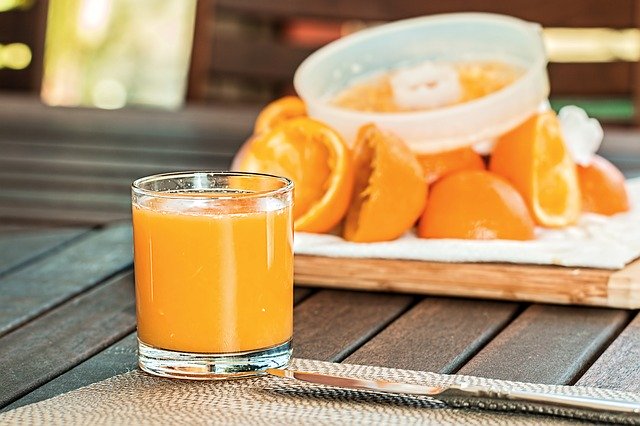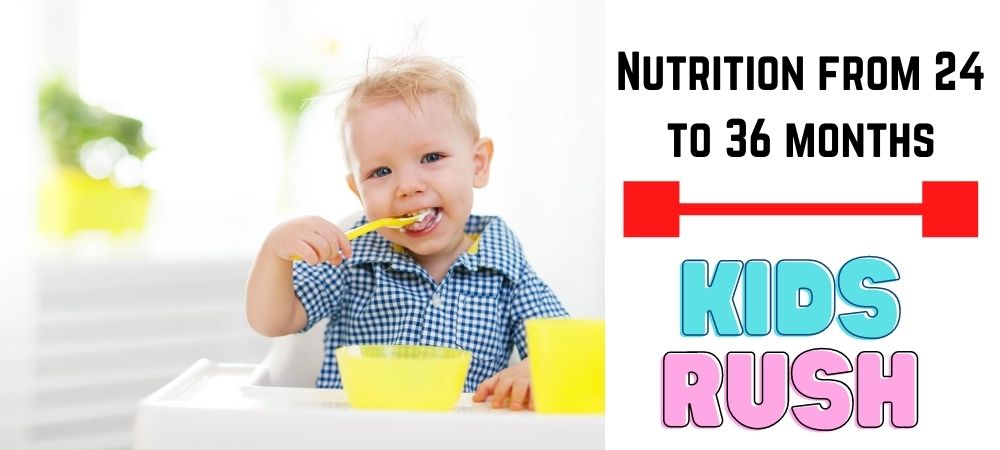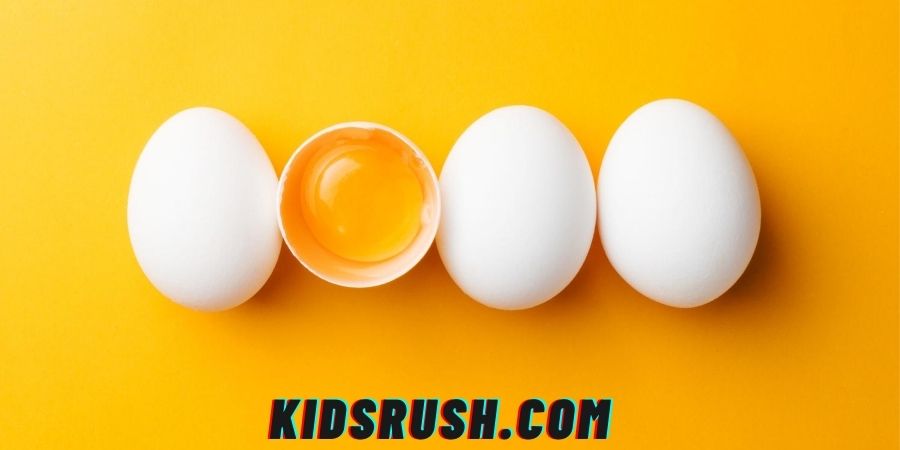Healthy meals for your baby
Now that your child is eating solid foods, you are at the right time to provide healthy meals and snacks. In reality, young children need to eat five or six times a day, therefore snacks should be called mini-meals. This is not necessarily as difficult as it sounds. Healthy snacks are easy to come by once you know what to look for. In this article, we will tell you what are healthy meals for your baby age by age. Stay tuned!
Foods to Avoid: Some foods are very dangerous for children of this age, as they can cause suffocation. These include:
- Sausages (unless they are cut into very small pieces).
- Whole grapes and tomatoes.
- Large hard candies, including chewy ones.
- Nuts, popcorn.
- Raw carrot, celery, green beans, or any tough vegetables.
- Pumpkin seeds, sunflower seeds …
- Large pieces of food such as meat, potatoes that are not chopped or crushed.
Comment on the juice
The juice is a highly addictive sweet drink for the child. It’s up to you to make sure your child doesn’t get too used to it. What’s wrong with juice? Nothing, if you give it in small amounts, that is, no more than 100 to 200 g per day. More juice per day means consuming too much sugar and is associated with infant diarrhea that contributes to poor nutrition. Excess juice displaces other healthier alternatives such as milk and solid foods. Bottle-fed juice is associated with ear infections and cavities. In developed countries, the most common cause of malnutrition is drinking too much juice!

A small cup (not a bottle) of juice to accompany a meal is fine, but make sure the juice doesn’t become the main course. Natural fruit juice is better than “fruit-flavored drinks”, cocktail drinks, or other artificial products. Read the labels on the containers and prevent the juice monster from taking over lunchtime. Here are some suggestions for small eaters of different ages and appetites.
Read Also:
- Nutrition from 24 to 36 months: General recommendations
- Constipation in children from 0 to 36 months
- 8 Foods for growing children well
- Solidarity: Educate children in values
Healthy meals for your 1-year baby
The 1-year-old is no longer eating, as his appetite and growth rate have decreased. All the more reason to tempt him with tasty and healthy meals. At this age, babies are ready for “snacks.” Eggs are a good source of balanced nutrition. Babies can use the extra iron found in egg yolk.
However, some children may be allergic to egg white, so watch out for any reactions. Scrambled eggs are a delicious, non-choking option that can be eaten at any time of the day. Don’t worry about cholesterol. Children need more than you. Three or four eggs a week are fine. Fresh fruits are better than fruit juice.
While fruit juices contain mostly sugar, fruits themselves are great sources of vitamins and other nutrients. Give your child small slices of fresh and juicy peach or ripe bananas and you will see how he cannot resist! Applesauce is another ingenious way to give your child fruit. Get ready to make everything dirty! Cheese strips or small cheese cubes are a good way to provide calcium in case you don’t like milk … or even if you do.
They also love fresh cheese. Cookies are usually a hit. Cooked and diced carrots and green beans make a tasty snack. Please don’t give him whole peas. Potatoes, cooked and cubed, solve the problem. Beware of the potato chip habit. Eating too much means consuming excess fat and salt.
Healthy meals for your 18 months baby
At this age, your little one needs to be fed two or three times a day, in addition to meals. Try these:
- Ripe bananas, either sliced or whole (it will be more fun for the child, but you will have more to clean).
- Tostadas, the best food for a young child. Try sprinkling a thin layer of cream cheese for added nutrition.
- Strips of cheese or slices of American cheese, cubes of cheddar cheese. Anyone serves this purpose. If you find a cheese that your little one likes, give it to her.
- Cereals. Put some cereal in a cup for an afternoon snack. Taking them one by one is part of what attracts young children.
- Unsalted rice bars. They are big and fun for the little hands that hold them. These crunchy snacks melt in your mouth.
Healthy meals for your 2 years baby

Watch your child’s diet to make sure they are getting enough important nutrients like iron, calcium, B vitamins, and protein. With that fickle appetite these days, it’s hard to know if you’re getting what you need each day.
Here are some very nutritious foods that make great chewy snacks for your little one:
- Scrambled eggs, hard-boiled eggs. They are a great source of iron and protein. Make small tortillas and cut them into bite-size pieces.
- Cheese strips, slices, and cubes of cheese. They are a smart way to get your child to consume calcium and protein.
- Fish sticks. It is a favorite food and a good source of calcium. Pair them with a delicious mashed potato to add carbs and you’ve got a complete meal!
- Unsalted breadsticks, unsalted rice bars, toasts. Any grain product is a good source of B vitamins, and young children generally like them because they are relatively soft. Try sprinkling some cream cheese on a slice of soft bread for a high protein and carbohydrate combination.
- Apple slices, peach slices, plums, orange slices. You can’t go wrong with giving her fresh fruit.
- Dried fruit, cut into pieces. Make sure to remove the pits from any prunes or dates you use. Young children love to drink chopped dried fruit from their favorite cups.
- “Arbolitos”, that is pieces of steamed cauliflower, placed vertically on the mashed potatoes. If given early on, they can become your favorite snacks.
- Mini pizzas.
Healthy meals for your 3 years baby
With all his daily activities and a growing imagination, a 3-year-old is busy all day, making good nutrition more important than ever.
- Scrambled eggs, hard-boiled eggs. They are a great source of iron and protein. Make small tortillas and cut them into bite-size pieces.
- Cheese strips, slices, and cubes of cheese. They are a smart way to get your child to consume calcium and protein.
- Fish sticks. It is a favorite food and a good source of calcium. Pair them with a delicious mashed potato to add carbs and you’ve got a complete meal!
- Unsalted breadsticks, unsalted rice bars, toasts. Any grain product is a good source of B vitamins, and young children generally like them because they are relatively soft. Try sprinkling some cream cheese on a slice of soft bread for a high protein and carbohydrate combination.
- Apple slices, peach slices, plums, orange slices. You can’t go wrong with giving her fresh fruit.
- Dried fruit, cut into pieces. Make sure to remove the pits from any prunes or dates you use. Young children love to drink chopped dried fruit from their favorite cups.
- Fruit smoothies are a hit at this age. Garnish them with a straw and you have the specialty of an ice cream parlor.
- “Arbolitos“, that is pieces of steamed cauliflower. If fed early on, these can become your favorite snacks.
- Tuna and salmon. Mix them with yogurt so they can spread and make up delicious and nutritious sandwiches.
- Cookies. Choose fig-stuffed or oatmeal varieties, rather than those that contain sugar.
Now that the child is attending kindergarten, here are some general guidelines for feeding:
- Choose snacks high in complex carbohydrates, such as bread, breadsticks, cookies, and pasta salads.
- To make them even more nutritious, add a little protein and fat, like cream cheese or butter.
- If your child helps you prepare a snack, they are more likely to eat it. Put it to work!
- Avoid the large number of children’s snacks sold on the market that are high in salt, fat, and sugar.
- Read labels on food products carefully, even those made especially for young children.
- Try to calculate how much salt or fat your child consumes each day. For example, a quarter of the recommended daily salt intake is too high for a single snack. By age 3, your child needs fewer fats and fatty acids than before.
- Ask your pediatrician if he’s ready to start drinking low-fat milk. However, remember that skim milk is too low in fat for young children.
- Dairy products are important but don’t overdo them. Your child needs 400 to 600 cc of milk (or dairy products like yogurt or cheese) a day for strong bones and healthy growth. But if you give more, your child could lose his appetite for other foods that contain important nutrients that milk does not.
- Breakfast cereals may become an essential food. It is a good choice for a meal or snack, as long as you choose a cereal with little sugar.
Here is a Weekly children’s menu for children from 6 to 12 years old:
| Day | BREAKFAST | Lunch | SNACK | Dinner |
|---|---|---|---|---|
| Monday | Yogurt with muesli | Potatoes stewed with meat. | Milk | Slice of pork tenderloin with baked vegetables. |
| Hake fillet with peas. | Whole wheat toast with spreadable cheese and light jam. | Yogurt | ||
| fruit | ||||
| Tuesday | Milk | Lentils with vegetables. | A handful of nuts. | Swordfish fillet with mashed potatoes. |
| Whole wheat toast with spreadable cheese and light jam. | Spinach Tortilla. | Yogurt | Gelatin with fruitsÿ. | |
| Yogurt. | ||||
| Wednesday | Milk | Macaroni with tomato sauce and cheese. | Homemade oatmeal cookies. | Zucchini omelette. |
| Whole wheat toast with oil and tomato. | Veal meatballs with garden sauce. | Natural orange juice. | Tomato salad with small pieces of soft cheese. | |
| Jelly Fruits | fruit | |||
| Thursday | Orange juice with whole grain rusks and spreadable cheese. | Vegetable puree with croutons. | fruit | Hake fillet with grilled vegetables gratin with cheese and tomato sauce. |
| Saxon steak and baked potatoes. | Strawberries or kiwi with 1 tablespoon of spreadable cheese. | |||
| fruit | ||||
| Friday | Yogurt with fruits. | Zucchini and carrot cream. | 1 whole wheat toast with spreadable cheese and avocado. | York ham tart with soft cheese. |
| Loin tape with tomato. | Yogurt | |||
| Roasted apple with cinnamon. | ||||
| Saturday | Milk with dried fruit cereals. | Stewed white beans. | fruit | Salmon with roasted potatoes. |
| Carrot salad with corn and pieces of chopped York ham. | Fruit salad | |||
| Yogurt | ||||
| Sunday | Roasted apples with cinnamon. | Chicken paella | Homemade oatmeal cookies. | Chicken with vegetables. |
| Orange juice. | Fruit salad. | Natural orange juice. | Jelly With Fruits. |

